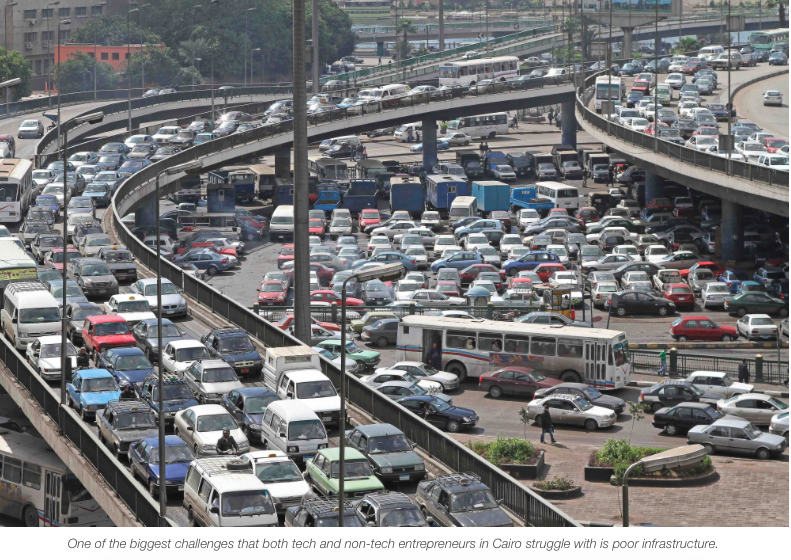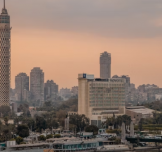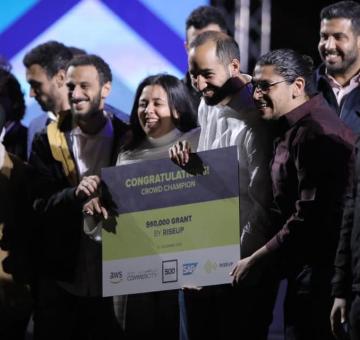Cairo’s Culture of Entrepreneurship (Part 3)

This article is part of the #urbaneconomies series originally published on www.progrss.com and commissioned by district coworking space.
Fear of failure and social acceptance are just two difficulties that, when compounded with other challenges, put entrepreneurs at a disadvantage. The underdevelopment of infrastructure for communication and transportation and the absence of strong support professionals servicing SMEs – not to mention confusing and often-contradictory regulations – means that entrepreneurs have to be in it for the long haul if they want to succeed. “I think all businessmen and entrepreneurs will agree that, in Egypt, you spend 80% of your time fighting against bureaucracy and 20% innovating, which kills our innovation,” says Mohamed El Sawy.
Besides bureaucracy, Internet infrastructure is perhaps the most openly voiced grievance. “We are competing with the world at a maximum of 4MB/second, whereas our cousins across the water are on 40, so we’re 10 times slower than them. And then there’s Asia, which is 20 times faster, so how can we compete?” asks O’Donnell. In 2015, Egypt ranked among the 15 slowest countries worldwide for Internet speed, and ranked 52 out of 62 countries for pricing.
But connectivity is hardly the only infrastructural challenge that entrepreneurs face in Cairo; the bustling megalopolis, which is home to more than one fifth of the country’s population – an estimated 20 million people – is a logistical nightmare. Published by the World Bank in May 2014, the Cairo Traffic Congestion Study put the economic costs of congestion in the Greater Cairo Metropolitan Area at EGP 47 billion (USD $8 billion). This amounts to 3.6% of Egypt’s total GDP, which, when distributed across a population of 19.6 million people living in the city, results in a per capita cost of about EGP 2,400 (USD $400) annually. And while New York loses an average of USD $10 billion on traffic annually, and Jakarta loses USD $5 billion, those losses represent 0.07% and 0.6% of the U.S. and Indonesian national GDPs, respectively – paling in comparison to the whopping 3.6% lost on Cairo traffic.

Perhaps it is for these reasons that so many entrepreneurs turn to tech when they want to do business; in spite of the infrastructural challenges associated with tech, business owners have to wade through fewer logistics and rely on fewer externalities to get stuff done. According to Hashem El Dandarawy, one of the appeals of tech entrepreneurship is the low barrier of entry: “If I tell you to create a company that will transport products from one area to another in Upper Egypt, you’ll think about all the obstacles that you have in terms of getting the cars, etc., but if I tell you to create an application to find the first car passing on the road to transport a product, you’ll tell me it’s simple, so the infrastructure of accomplishment is different,” he explains.
But it is precisely these kinds of challenges that entrepreneurs need to highlight and regulators need to address if entrepreneurship is to have any meaningful impact on people’s lives. “To really have development, you have to talk to the masses, and the masses are not tech savvy. This country needs both the IT person who preps the country to be on the forefront and the entrepreneur who is looking at the physical aspect of the economy,” adds Dandarawy.
An Entrepreneurial Ecosystem
But while citywide infrastructure affects all businesses equally, an infrastructure specifically tailored for SMEs and entrepreneurs has cropped up over the past 15 years, developing a community of entrepreneurs and their supporters around it. And while conferences, business plan competitions and Startup Weekends abound, they remain largely focused around a young, educated middle class.
“Some people say that we are an ego-system not an ecosystem, and I hear this frequently. Yes, you see the same faces at different events, and this is partially because it’s the same people inviting the same pool of people…discussing the same points. This makes people feel that it is a clique, but let’s look at it this way – we are maturing, learning and experiencing, and that’s not a bad thing.,” says Hala Hattab.
When compared to other industries, the interconnectedness of the tech ecosystem is highly appealing. Third generation entrepreneur and CEO of Lotfy footwear, Bassem Lofty describes his experience in the footwear industry, which he perceives as competitive without purpose and lacking in foresight. “We’re in a market where no one helps the other. In Egypt, when someone falls, nobody helps him, which is not the case in other markets,” he says.
But even those who have traditionally operated in the tech space see the merits of engaging a larger group of entrepreneurs. “We could be a bubble in a bubble, but we don’t want that,” says O’Donnell of RiseUp’s annual summit. “This year, we’re looking very closely at the creative economy, for example. The other group we’re looking to bring in is the clean tech, so all of the renewable energy and recyclables. This is a group of people who have a lot of underlying tech, but they’re not high tech…These people are going to transform the world,” he adds.






































































EgyptInnovate site is not responsible for the content of the comments